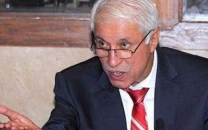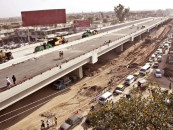Faceless customs system rollout halted on flaws
Committee finds 57% increase in clearance time, 2% to 23% drop in revenue between Feb-April'25 under new FCA model

A review committee has recommended that the Federal Board of Revenue (FBR) halt the further rollout of the much-publicised Faceless Customs Assessment (FCA) system after discovering that it caused a 57% increase in container clearance time and a decline in revenue.
The Review Committee on FCA also questioned the system's design, stating that it had been tested 20 years ago and later discontinued due to similar flaws. After early reports of success, Prime Minister Shehbaz Sharif travelled to Karachi in January to inaugurate the new system. The FCA was introduced to eliminate physical contact between importers and customs officers, aiming to increase revenues and speed up clearance of imported containers.
"This committee does not recommend implementation of further phases or rollout of FCA unless its efficacy is confirmed through other means or with larger datasets, or its design is reviewed," the three-member committee stated in its report finalised last month.
According to FBR's original plan, the second phase of the FCA was to be implemented by June 2025 at all Appraisement Collectorates, dry ports, and land border stations. The third phase, scheduled for September 2025, would extend the system to all airports and Export Collectorates.
However, the committee has now advised halting the expansion due to major issues in the first phase. The FCA's implied objective was to curb collusion between importers and customs officers, which was seen as a cause of revenue loss. But the report states the system "has not achieved this objective."
FBR Chairman Rashid Langrial told the National Assembly Standing Committee on Finance this week that the system was not primarily aimed at increasing revenue.
The report noted that two of the FCA's basic design concepts — hiding trader information from assessing officers and ending specialised assessment groups — had already been tried and abandoned 20 years ago when Pakistan Customs' first computerised system was introduced. The reasons for their earlier failure remain valid today.
The committee found that specialised assessment groups helped build sector-specific institutional memory and stronger customs controls, while also reducing clearance time through repeated handling of similar products.
Langrial acknowledged the implementation problems during a meeting with the Finance Committee on Friday and said they would be resolved by next month. However, the very committee formed under his orders has recommended halting the rollout.
The final report on FCA and Centralised Assessment Unit (CAU) performance was submitted to FBR management last month, in response to a review ordered by Langrial.
The report revealed that in November 2024, before the FCA was implemented, the average clearance time for goods declarations was 25.6 hours. This rose steadily, peaking at 46 hours in April 2025. On average, clearance time increased 57% to 40.2 hours.
"It is evident that the dwell time has significantly increased after the implementation of FCA," the report noted. Between July and November 2024 (pre-FCA), 84% of declarations were cleared within 48 hours. This dropped to 70% between December and April 2025 (post-FCA).
For goods declarations that were both assessed and examined, average clearance time increased from 74 hours to 81 hoursa 10% jump.
The committee also evaluated the system's impact on revenue. Under the previous system, duties collected exceeded declared values by 13% to 17%. But following FCA's introduction, duties and taxes fell. Between February and April 2025, total revenues dropped by 2% to 23% compared to prior months. "The value addition by assessing officers is reflected in the extra revenue collected," the report stated. This contribution dropped from 16% in July-November to 13% in December-April.
However, the number of documents called for examination dropped from 37% to 21%.
The Director General of Risk Management System and the Member Operations FBR Customs, both part of the review committee, did not respond to requests for comment. The report showed that customs officers now refer more goods declarations to senior officers after assessment. Referrals rose from 6% in the old system to 11% under FCA. Lab referrals also doubled.
The WeBOC system allows traders to file reviews before principal appraisers and assistant collectors. Under FCA, such appeals increased from 6% to 14%, further delaying clearance and increasing workload. "Increased examinations, senior officer referrals, lab tests, and especially reviews have offset any time saved from reduced document calls, thereby increasing overall dwell time," the report stated. It also noted that the quality of assessments had deteriorated, as indicated by the surge in review filings.
Langrial admitted that clearance times at appraisal and examination stages had risen due to the increased number of reviews filed by importers. "At the design stage, we did not anticipate the rise in reviews," he said, adding that FBR would introduce virtual hearings by assistant and deputy collectors starting July to address the issue.
The new FCA system was designed to address long-standing issues in customs processes by enabling remote, technology-driven assessments and minimising physical contact through automation. During the first few weeks of FCA's implementation, the average time for container clearance had initially improved, dropping from 108 hours to 66. However, the long-term data now shows the opposite trend.






















COMMENTS (1)
Comments are moderated and generally will be posted if they are on-topic and not abusive.
For more information, please see our Comments FAQ